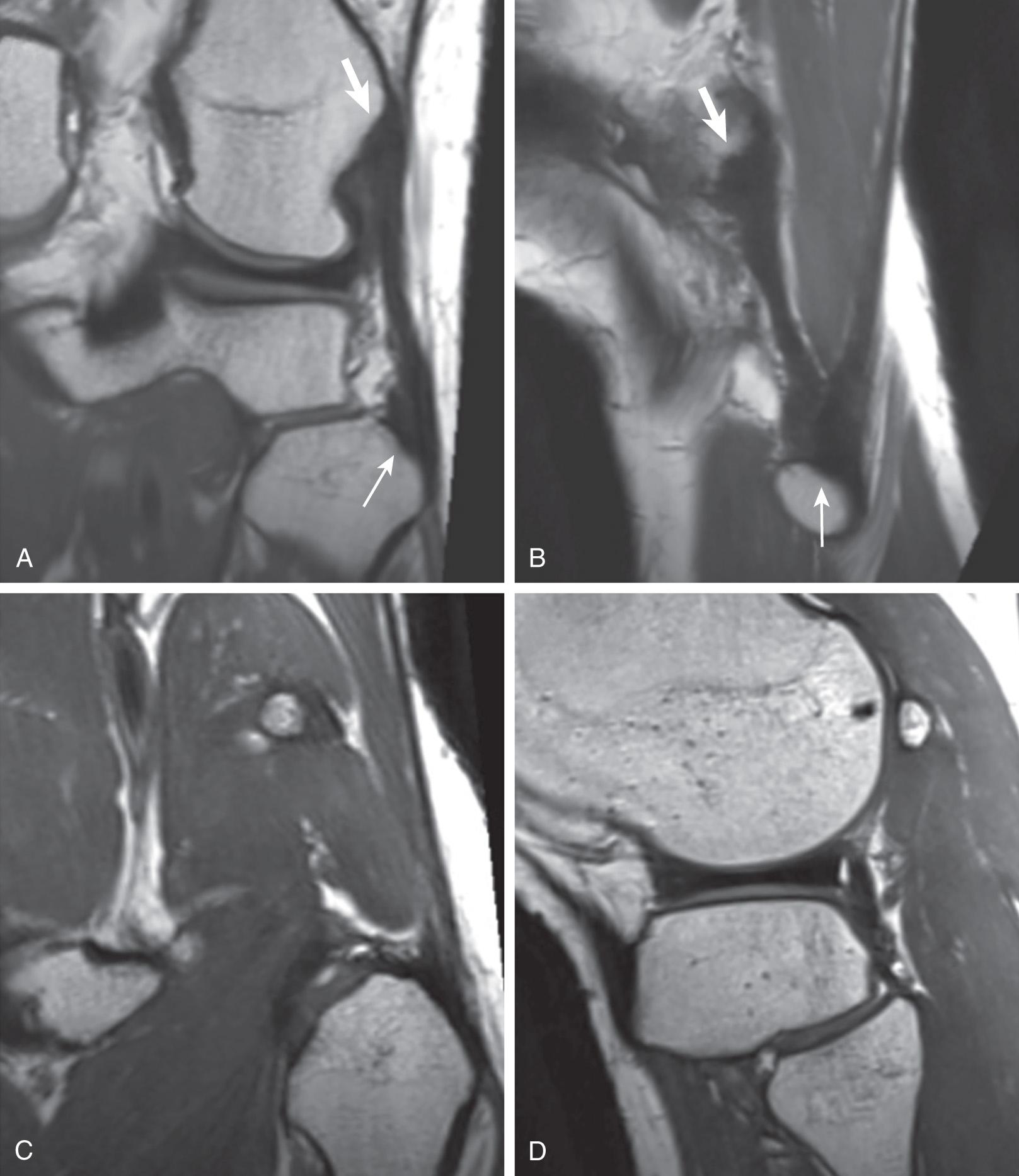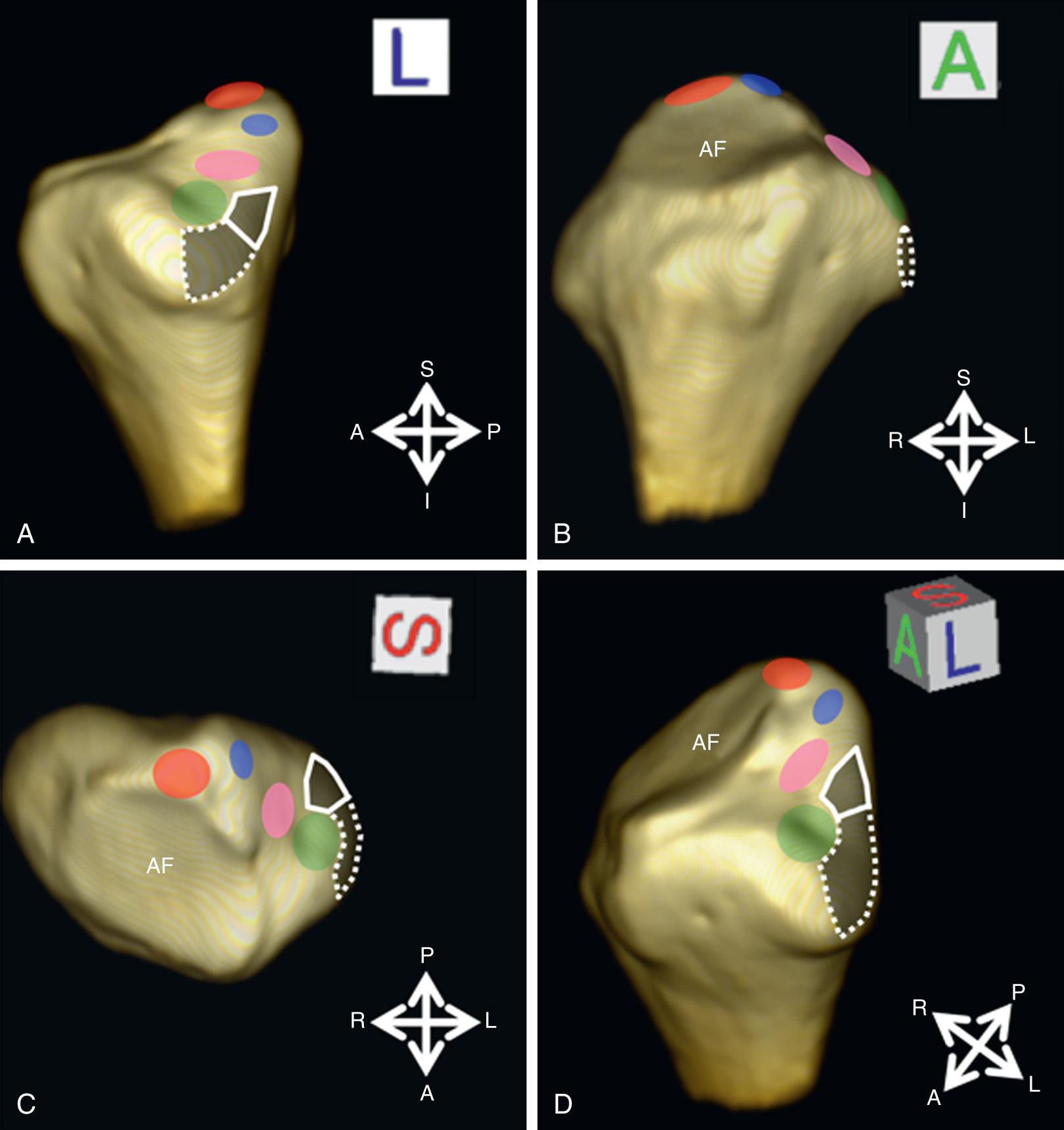Physical Address
304 North Cardinal St.
Dorchester Center, MA 02124
The lateral supporting structures, including the posterolateral corner and iliotibial band, are important for knee stability and injuries to these structures are more common than historically recognized. Using magnetic resonance imaging (MRI) exams in patients presenting with acute knee trauma, authors have recently found that injuries to the posterolateral corner structures occur in up to 21% of cases and injuries to the iliotibial band occur in up to 58% of cases. This is in contrast to previously reported figures as low as 6% for injury to the posterolateral corner structures and as low as 0% for iliotibial band injury in the setting of posterolateral corner injury. The true prevalence likely lies somewhere in between, but in general these injuries are underdiagnosed.
Isolated injuries to the posterolateral corner are rare, typically occurring after an impact is directed at the anteromedial knee during extension, although posterolateral twisting or a varus force in flexion can also be mechanisms. Rather, the overwhelming majority of posterolateral corner and iliotibial band injuries involve concurrent injuries to other ligaments, most commonly the anterior cruciate ligament. Cruciate ligament injuries may dominate the clinical picture and, when deficiency of the lateral supporting structures is overlooked or mistreated, persistent knee instability can lead to cruciate ligament graft failure and poor patient outcomes. The appropriate diagnosis and treatment of injuries to the lateral supporting structures has historically been challenging, because of a combination of poorly understood anatomy, limitations in noninvasive diagnostic techniques, and nonanatomic reconstructive procedures.
In more recent years, improvements to our understanding of anatomy and the use of biomechanically validated anatomic reconstructive techniques have led to improved patient outcomes. Furthermore, advances in imaging techniques have increased diagnostic accuracy. Although ultrasound can also be used, MRI has been and remains the standard imaging modality for comprehensive evaluation of the lateral supporting structures. This chapter reviews the MRI examination of the anatomy and diagnosis of abnormalities to the lateral supporting structures, focusing on acute injuries to these structures.
Traditionally, a layered approach has been used to describe the soft tissue supporting structures about the knee, including those of the posterolateral corner. While this approach has historic significance and can be helpful during hands-on cadaveric dissections, the most common method of learning and understanding the anatomy of the lateral and posterolateral knee is to name individual anatomic structures.
The major source of confusion regarding the lateral knee structures is nomenclature, and the naming of individual structures differs among authors. LaPrade reviewed over 250 years of literature and systematically outlined the historical confusion regarding the posterolateral corner structures. After highlighting the controversy around the term arcuate ligament , it was recommended that this term be dropped. In short, previous authors who did not recognize the popliteofibular ligament usually called it the arcuate ligament , including Seebacher et al., whose article is one of the most highly cited of all time with regard to detailing the posterolateral corner structures. A subsequent publication from authors from the same institution later recognized the popliteofibular ligament and redefined the arcuate ligament , but we now know that their description represents the capsular arm of the short head of the biceps femoris. Others have referred to the fabellofibular ligament as the arcuate ligament . LaPrade defines the arcuate ligament as being comprised having two limbs: a medial limb, composed of the oblique popliteal ligament, and a lateral limb, composed of the many structures that course from the posteromedial aspect of the fibular styloid to the posterolateral capsule, including the popliteofibular ligament , fabellofibular ligament , and capsular arm of the short head of the biceps femoris. Recently other authors have used the same term to describe the functional unit composed of the popliteofibular ligament , fabellofibular ligament , popliteomeniscal fascicles , anterolateral ligament, and capsular arm of the short head of the biceps femoris. It is generally agreed that the arcuate ligament is not a single, distinct ligament but rather several structures that form an arched appearance. Therefore a strong argument can be made to describe the important individual components rather than continue using the confusing term arcuate ligament , which has nearly as many definitions than there are structures in the posterolateral corner.
Rediscovery, renaming, and clarification of ligamentous structures persists to this day, most recently with the highly publicized anterolateral ligament . The need for standardization of terminology is imperative for communication. Unfortunately, despite the long history of conflicting nomenclature and numerous calls for standardization, no universally accepted set of terms has emerged. This chapter uses the terminology proposed by LaPrade, which is based on consistent anatomic attachments and relationships, to readily identified anatomic structures, such as the inferior lateral genicular artery and popliteus.
It is emphasized that the need for surgery is determined based on a clinical exam. However, imaging assessment can play an important role in acute and chronic injuries. In the acutely injured knee, a complete physical examination may be difficult and MRI is particularly helpful. Similar to a complete physical exam, complete imaging assessment of the injured knee involves evaluation of the lateral supporting structures. If edema or any post-traumatic abnormality is detected in the posterolateral corner, careful analysis of all supporting structures is necessary because of the high frequency of associated injuries.
Visualization of the posterolateral corner structures can be dependent on the MRI protocol. Conventional MRI protocols are based on two-dimensional (2D) sequences, typically in the axial, coronal, and sagittal oblique (prescribed parallel to the lateral border of the lateral femoral condyle or anterior cruciate ligament) imaging planes. Conventional sequences provide high in-plane resolution but typically use relatively thick 4-mm slices, which may suboptimally evaluate many of the posterolateral knee structures. Even with highly optimized sequences using 2-mm slice thickness, the through-plane resolution is at least 4 to 6 times the in-plane resolution. This is well suited for structures that are large or course within or orthogonal to the imaging plane. However, structures that are small or have an oblique course relative to the plane of imaging tend to be less consistently identified on standard 2D imaging, such as the fabellofibular ligament.
The 2D coronal oblique imaging plane has been reported to improve visualization of the fabellofibular and popliteofibular ligaments ; however, it is clear that three-dimensional (3D) sequences will ultimately provide the best assessment. Rajeswaran et al. used a 0.8-mm isotropic 3D water excitation double-echo steady-state (WE-DESS) sequence acquired in 2 minutes on a 1.5T system and reported visualization of the popliteofibular ligament in 91% of cases compared with 71% using the 2D coronal-oblique plane. Imaging technology continues to improve, most recently with 3D variable flip angle fast-spin echo (FSE) sequences such as SPACE (Siemens, Erlangen, Germany), CUBE (GE Medical Systems, Milwaukee, WI), and VISTA (Philips, Eindhoven, Netherlands), which can provide improved contrast compared with gradient echo–based 3D sequences. Many centers have incorporated 3D-FSE sequences into their routine protocols using isotropic voxel sizes less than 0.6 mm. However, studies comparing the different 3D sequences and use of different imaging parameters for the assessment of the lateral supporting structures have not yet been performed to our knowledge. As part of the 3T knee protocol at our institution, we use a non–fat-suppressed, intermediate-weighted 3D-FSE sequence and routinely, but not invariably, visualize most of the structures described in this chapter using standard or reconstructed oblique planes ( Fig. 10.1 ).

For accurate identification of the posterolateral corner structures, a thorough understanding of the osseous and soft tissue anatomy is imperative. Familiarity with the typical cross-sectional appearance of osseous contours and the soft tissue attachment sites aids in the recognition of structures on individual images. The styloid process projects upward from the posterior portion of the fibular head at approximately the middle third and is a particularly important landmark ( Fig. 10.2 ). For instance, the expected attachment of the popliteofibular ligament is at, and just medial to, the superior tip of the styloid process.

Although signal abnormality is a hallmark of pathology, not all increases in signal are pathologic or indicative of a tear. Choi et al. found that intrasubstance signal alteration and thickening is frequently present in the fibular collateral ligament and popliteus tendon in patients with minor internal derangements in otherwise stable knees. However, structural discontinuity is indicative of a tear. Although failure of ligaments and tendons can occur at any location, including within their substance, at the enthesis (soft tissue–bone attachment), or at bone in the form of an osseous avulsion, there are more typical patterns of failure for each of the lateral supporting structures. The location of failure is important because it has implications for treatment, particularly for surgical candidates. For instance, midsubstance injuries are not typically amenable to primary repair, but osseous avulsions are. Soft tissue avulsions of the structures that attach to the proximal fibula or tibia may be repaired back to their attachment sites, but femoral soft tissue avulsions tend to be constructed. In the following section, anatomic considerations and imaging features of individual components of the lateral supporting structures are further discussed.
Become a Clinical Tree membership for Full access and enjoy Unlimited articles
If you are a member. Log in here